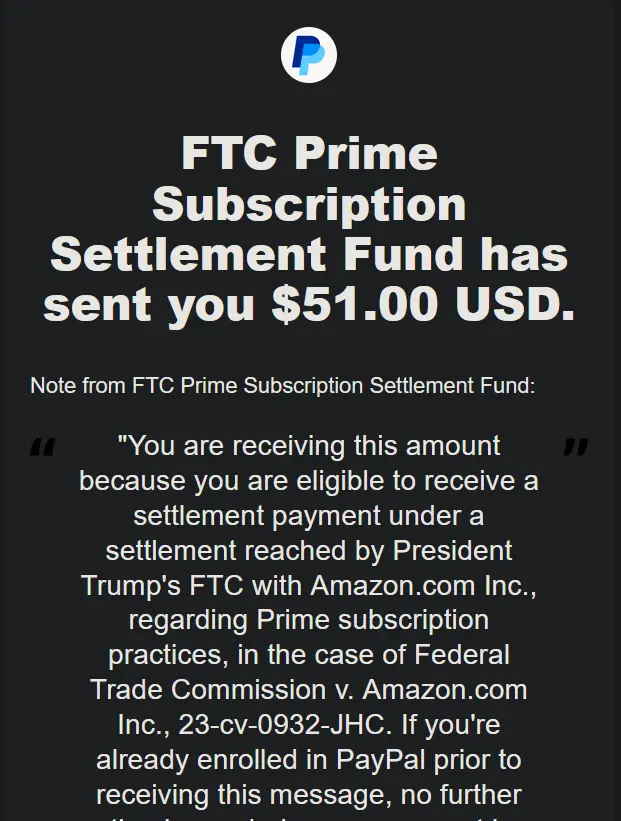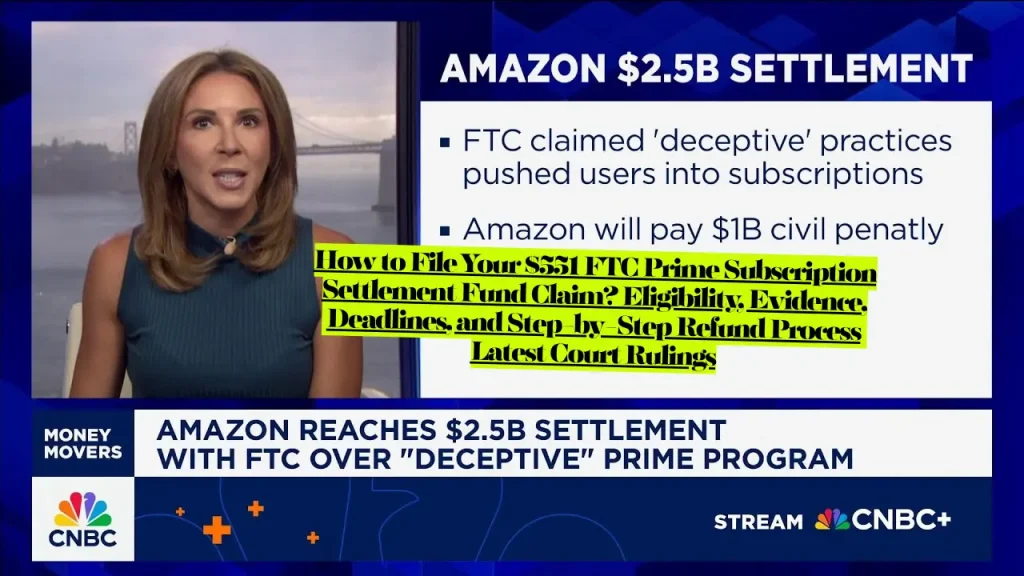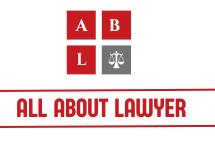Amazon Prime FTC Settlement Lawsuit Sign Up, Claim Your $51 Refund Before December 24, 2025 Deadline
Amazon Prime FTC settlement lawsuit sign up is happening NOW—eligible members can claim up to $51 from the historic $2.5 billion settlement. Between November 12 and December 24, 2025, Amazon will provide automatic refunds to millions of eligible Prime customers, with a second claims process opening December 24 for additional qualified members. If you signed up for Prime between June 23, 2019, and June 23, 2025, you need to know your eligibility status immediately.
How to Sign Up for Amazon Prime FTC Settlement—Quick Answer
Amazon will pay refunds in two stages: an automatic refund process for eligible Prime customers and a claims process for eligible Prime customers who didn’t get an automatic refund. Here’s exactly what you need to do:
For Automatic Refunds (No Sign-Up Required):
- Eligible customers will receive an email from Amazon between November 12 and December 24
- You’ll get your refund via PayPal or Venmo (must accept within 15 days)
- Want a check instead? Simply ignore the email and Amazon will mail one to your default address
- You must cash checks within 60 days
For Manual Claims (Starting December 24, 2025):
- Consumers eligible to submit a claim will be notified between December 24 and January 23, 2026
- Visit the official settlement website at www.SubscriptionMembershipSettlement.com
- Complete the claim form with your Amazon account information
- You’ll have 180 days to complete and submit the claim form once you receive it
- Submit via email, mail, or through SubscriptionMembershipSettlement.com
- After reviewing your claim, Amazon will issue refunds within 30 days of approval

What Is the Amazon Prime FTC Settlement Lawsuit About?
The FTC has charged Amazon and several Amazon executives with knowingly misleading millions of consumers into enrolling in Prime, violating the FTC Act and the Restore Online Shoppers’ Confidence Act. This isn’t just about confusing buttons—it’s about a deliberate system that trapped consumers.
The September 2025 settlement came after damning evidence emerged. Amazon documents discovered in the lead up to trial showed that Amazon executives and employees knowingly discussed these unlawful enrollment and cancellation issues, with comments like “subscription driving is a bit of a shady world” and leading consumers to unwanted subscriptions is “an unspoken cancer”.
The Federal Trade Commission has secured a historic order with Amazon.com, Inc., as well as Senior Vice President Neil Lindsay and Vice President Jamil Ghani, settling allegations that Amazon enrolled millions of consumers in Prime subscriptions without their consent, and knowingly made it difficult for consumers to cancel.
The numbers are staggering: The payout marks the FTC’s largest settlement ever and the second-largest consumer refund in history.
Amazon Prime Settlement Eligibility Requirements—Am I Qualified?
Understanding Amazon Prime settlement eligibility is crucial. There are two tiers of eligibility based on your usage patterns.
Automatic Refund Eligibility (No Sign-Up Needed):
You may be eligible for an automatic refund from Amazon if you meet all three requirements: You are an Amazon Prime customer in the United States, you signed up for an Amazon Prime subscription through a “challenged enrollment flow” between June 23, 2019 and June 23, 2025, and you used no more than three Amazon Prime Benefits in any 12-month period following Amazon Prime enrollment.
What Are “Challenged Enrollment Flows”?
Customers qualify for an automatic payment if they signed up for Prime or unsuccessfully tried to cancel their membership through Amazon’s “challenged enrollment flow,” defined as “any version of the Universal Prime Decision Page, the Shipping Option Select Page, Prime Video enrollment flow, or the Single Page Checkout”.
Claims Process Eligibility (Requires Form Submission):
This group constitutes those who signed up through a challenged enrollment flow or unsuccessfully tried to cancel their memberships during the five-year period, and haven’t used more than 10 Prime benefits during any 12-month period of enrollment.
The court defines an attempt to cancel as “entering, but failing to complete, the online cancellation process” or “taking a Save Offer during the online cancellation process”.
Important: If you used Prime frequently, you likely won’t qualify—the settlement targets customers who accidentally enrolled or barely used the service.
Amazon Prime Settlement Claim Form—Step-by-Step Process
Here’s exactly how to sign up for the Amazon Prime FTC settlement through both processes:
Automatic Payment Process (November 12 – December 24, 2025)
Step 1: Check Your Email Eligible customers will receive an email from Amazon between November 12 and December 24. This email comes from Amazon, not the FTC.
Step 2: Choose Your Payment Method
- Option A: Click the PayPal or Venmo link within 15 days
- Option B: Customers who prefer to receive their payment by check should ignore the email from Amazon. Once they do not claim the PayPal or Venmo payment, Amazon will mail them a check to their default shipping address listed on their Prime subscription
Step 3: Complete Payment
- PayPal/Venmo payments process immediately after acceptance
- If you get a check, please cash it within 60 days
Manual Claims Process (Starting December 24, 2025)
Step 1: Wait for Notification Within 30 days of finishing automatic payouts, Amazon will send a form to claims process eligible consumers. You’ll receive notice via email and mail between December 24, 2025, and January 23, 2026.
Step 2: Complete the Claim Form Consumers can then confirm whether they unintentionally enrolled, unsuccessfully attempted to cancel their subscription, or both.
Step 3: Submit Your Claim They will have up to 180 days after receiving the claims form to submit it to Amazon via e-mail, First-Class postage pre-paid mail, or the settlement website at SubscriptionMembershipSettlement.com.
Step 4: Wait for Review Amazon will have up to 30 days to review and make a decision about a claim.

Amazon Prime Refund Amount—How Much Money Will I Get?
Under the settlement, eligible Prime customers will receive a refund of their Amazon Prime subscription fees, up to a maximum of $51.
Your actual Amazon Prime settlement payout depends on:
- How long you maintained your Prime subscription during the eligible period
- Total Prime membership fees you paid
- Whether you qualified through accidental enrollment or failed cancellation
The program includes automatic refunds for some low-usage accounts and a claims process for others, with timing tied to final court approval and administrator outreach.
The settlement aims to distribute $1.5 billion in refunds back to consumers harmed by their deceptive Prime enrollment practices, affecting an estimated 35 million customers.
Amazon Prime Settlement Deadline—Critical Dates You Cannot Miss
Missing these Amazon Prime FTC lawsuit deadline dates means losing your money:
Phase 1: Automatic Refunds
- November 12, 2025: Automatic refund emails begin
- December 24, 2025: Final day for automatic refund distribution
- Within 15 days of email: Accept PayPal/Venmo payment or default to check
- Within 60 days: Cash mailed checks
Phase 2: Claims Process
- December 24, 2025: Claims process officially opens
- December 24, 2025 – January 23, 2026: Claim form notification period
- Within 180 days of receiving form: Submit completed claim
- Within 30 days of submission: Amazon reviews and processes approved claims
- 2026: Final claim payments distributed
You don’t need to do anything right now. In 2026, Amazon will begin its claims process for eligible Prime customers who didn’t get an automatic refund between November and December 2025.
Amazon Prime FTC Lawsuit Details—What Amazon Did Wrong
The FTC’s case against Amazon revealed systematic deception spanning years.
The Enrollment Trap: The FTC alleged Amazon created confusing and deceptive user interfaces to lead consumers to enroll in Prime without their knowledge. During checkout, buttons to complete purchases often failed to clearly indicate that clicking meant enrolling in Prime.
The Cancellation Maze: Amazon didn’t just make enrollment deceptive—they made escape nearly impossible. Amazon also created a complex and difficult process for consumers seeking to cancel their Prime subscription, with the goal of preventing consumers from cancelling Prime.
Executive Knowledge: This wasn’t an accident. Amazon documents discovered in the lead up to trial showed that Amazon executives and employees knowingly discussed these unlawful enrollment and cancellation issues, proving leadership knew about the problems and chose not to fix them.
Amazon Settlement Terms—What Amazon Must Do Now
The settlement doesn’t just pay victims—it forces Amazon to change how it operates.
New Enrollment Requirements: The settlement requires Amazon to stop their unlawful practices and make meaningful changes to the Prime enrollment and cancellation flows by including a clear and conspicuous button for customers to decline Prime. Amazon can no longer have a button that says, “No, I don’t want Free Shipping”.
Transparency Mandates: Including clear and conspicuous disclosures about all material terms of Prime during the Prime enrollment process, such as the cost, the date and frequency of charges to consumers, whether the subscription auto-renews, and cancellation procedures.
Simplified Cancellation: Creating an easy way for consumers to cancel Prime, using the same method that consumers used to sign up. The process cannot be difficult, costly, or time-consuming and must be available using the same method that consumers used to sign up.
Independent Oversight: Paying for an independent, third-party supervisor to monitor Amazon’s compliance with the consumer redress distribution process.
Prime Settlement Website—Official Resources and Scam Warnings
Official Settlement Website: The only legitimate settlement website is SubscriptionMembershipSettlement.com. This site will provide claim forms, FAQs, and status updates starting December 24, 2025.
FTC Official Page: For verified information, visit the FTC’s Amazon Refunds page at www.FTC.gov/enforcement/refunds/amazon-refunds.
CRITICAL SCAM WARNING:
The FTC is not contacting people about refunds in the Amazon matter. If you get a call from someone who claims to be from the FTC, it’s a scam.
The FTC will never demand money, make threats, tell you to transfer money, or promise you a prize. And no one from Amazon will ever ask you for money to get a refund.
Report scams immediately at ReportFraud.ftc.gov.
What Counts as Prime Benefits Under the Settlement?
Understanding what qualifies as a “Prime Benefit” determines your eligibility category.
“Prime Benefits” includes:
- Prime Video streaming content
- Prime Music access
- Prime Reading digital books
- Two-day shipping on eligible items
- Same-day delivery options
- Prime Day deals access
- Other membership-exclusive features
Important Exception: Free expedited shipping doesn’t count as a Prime Benefit if the transaction would have received that shipping speed for free without Prime membership.
The three-benefit threshold (automatic refunds) and 10-benefit threshold (manual claims) are calculated per any 12-month period during your enrollment.
How to Check Amazon Prime Settlement Status
For Automatic Payments:
- Check your email between November 12 and December 24, 2025
- Look for communication from Amazon (not FTC)
- If you haven’t received an email by December 24, you likely fall into the claims category
For Manual Claims:
- You don’t need to contact the FTC to receive a refund. We will update this page when Amazon starts its claims process
- Watch for notification between December 24, 2025, and January 23, 2026
- Check SubscriptionMembershipSettlement.com for updates starting December 24
If You’re Unsure: Don’t call anyone claiming to represent the FTC or Amazon. Wait for official communication through your registered Amazon email or mail to your default address.
Amazon Prime Cancellation Issues—Were You Affected?
Many eligible claimants don’t realize they qualify because they eventually managed to cancel Prime—but the struggle to cancel is exactly what makes them eligible.
You may qualify if you:
- Started the cancellation process but couldn’t figure out how to complete it
- Clicked through multiple screens trying to cancel
- Accepted a “Save Offer” during cancellation, thinking it was required to cancel
- Reduced your membership tier instead of canceling outright
- Gave up on cancellation due to the complexity
The court defines an attempt to cancel as “entering, but failing to complete, the online cancellation process” or “taking a Save Offer during the online cancellation process”.
Even if you eventually canceled successfully, if you struggled through the process between June 23, 2019, and June 23, 2025, you may still qualify for compensation.
FAQ: Amazon Prime FTC Settlement Sign Up Questions
How do I sign up for the Amazon Prime FTC settlement?
Christopher Bissex, deputy director of public affairs at the FTC, told CBS News that “Our settlement required Amazon to pay those people who clearly qualify without them having to do anything”. For automatic refunds, no sign-up is needed—Amazon will email you. For manual claims, wait for your notification between December 24, 2025, and January 23, 2026, then complete the form at SubscriptionMembershipSettlement.com within 180 days.
What is the Amazon Prime settlement lawsuit about?
The suit alleged that the company enrolled millions of customers in Amazon Prime subscriptions without their knowledge or consent and then made cancellation difficult. Amazon settled for $2.5 billion in September 2025 without admitting wrongdoing.
Who qualifies for the Amazon Prime FTC settlement?
You qualify if you’re a U.S. Amazon Prime customer who signed up through challenged enrollment flows between June 23, 2019, and June 23, 2025, and used limited Prime benefits (three or fewer for automatic refunds, 10 or fewer for manual claims). Those who unsuccessfully attempted to cancel also qualify.
When is the Amazon Prime settlement deadline?
Automatic refund emails arrive between November 12 and December 24, 2025 (accept within 15 days). Claims process notifications go out December 24, 2025, through January 23, 2026. You have 180 days from receiving your claim form to submit it.
How much is the Amazon Prime settlement payout?
Eligible Prime customers will receive a refund of their Amazon Prime subscription fees, up to a maximum of $51. Your exact amount depends on how much you paid in membership fees during the covered period.
Where is the official Amazon Prime settlement website?
The official settlement website is SubscriptionMembershipSettlement.com. For FTC information, visit www.FTC.gov/enforcement/refunds/amazon-refunds. Never respond to phone calls claiming to be from the FTC or Amazon—these are scams.
What if I didn’t get an automatic refund?
Prime members who don’t receive an automatic refund can submit a claim starting on December 24. You’ll receive notification if you’re eligible for the claims process between December 24, 2025, and January 23, 2026.
Related Consumer Protection Settlements
Interested in other major settlements? Check these consumer protection cases:
- Facebook Lawsuit Payout Latest Today Update: Active Settlements, Eligibility & Payout Amounts
- AT&T Hit With $177 Million Class Action Lawsuit: Claim Your Share Before December 18 Deadline
- Wells Fargo Class Action Lawsuits 2025: $2+ Billion in Settlements—Check Your Eligibility NOW
Disclaimer: This article provides factual information about the Amazon Prime FTC settlement lawsuit sign-up process based on publicly available FTC documents, settlement agreements, and verified legal sources. It is for educational purposes only and does not constitute legal advice. Settlement terms, deadlines, and eligibility requirements are subject to change. For specific legal advice regarding your eligibility or claim, please consult with a qualified consumer protection attorney or visit the official settlement website at SubscriptionMembershipSettlement.com.
About the Author

Sarah Klein, JD, is a licensed attorney and legal content strategist with over 12 years of experience across civil, criminal, family, and regulatory law. At All About Lawyer, she covers a wide range of legal topics — from high-profile lawsuits and courtroom stories to state traffic laws and everyday legal questions — all with a focus on accuracy, clarity, and public understanding.
Her writing blends real legal insight with plain-English explanations, helping readers stay informed and legally aware.
Read more about Sarah
